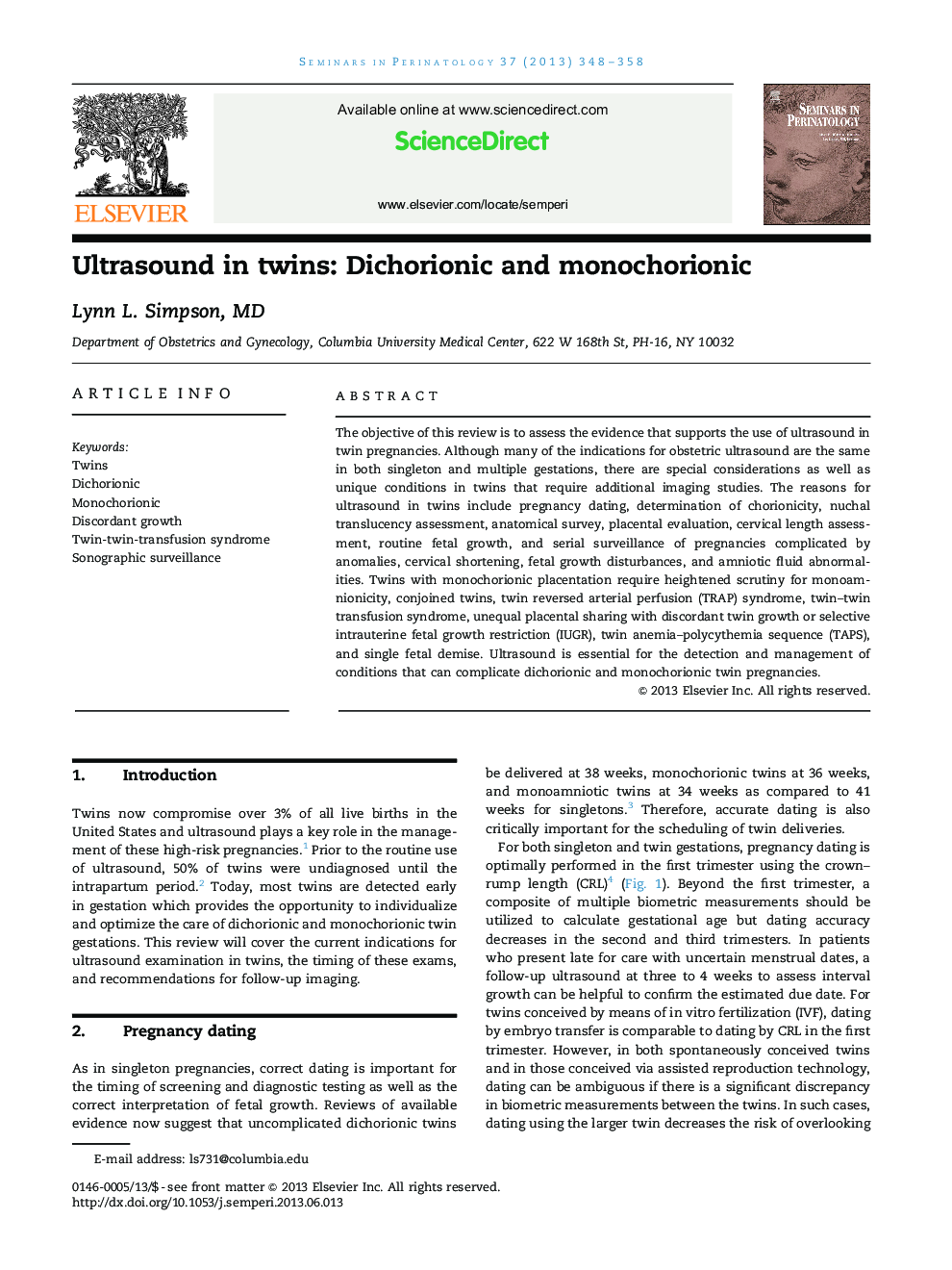| Article ID | Journal | Published Year | Pages | File Type |
|---|---|---|---|---|
| 3836574 | Seminars in Perinatology | 2013 | 11 Pages |
The objective of this review is to assess the evidence that supports the use of ultrasound in twin pregnancies. Although many of the indications for obstetric ultrasound are the same in both singleton and multiple gestations, there are special considerations as well as unique conditions in twins that require additional imaging studies. The reasons for ultrasound in twins include pregnancy dating, determination of chorionicity, nuchal translucency assessment, anatomical survey, placental evaluation, cervical length assessment, routine fetal growth, and serial surveillance of pregnancies complicated by anomalies, cervical shortening, fetal growth disturbances, and amniotic fluid abnormalities. Twins with monochorionic placentation require heightened scrutiny for monoamnionicity, conjoined twins, twin reversed arterial perfusion (TRAP) syndrome, twin–twin transfusion syndrome, unequal placental sharing with discordant twin growth or selective intrauterine fetal growth restriction (IUGR), twin anemia–polycythemia sequence (TAPS), and single fetal demise. Ultrasound is essential for the detection and management of conditions that can complicate dichorionic and monochorionic twin pregnancies.
